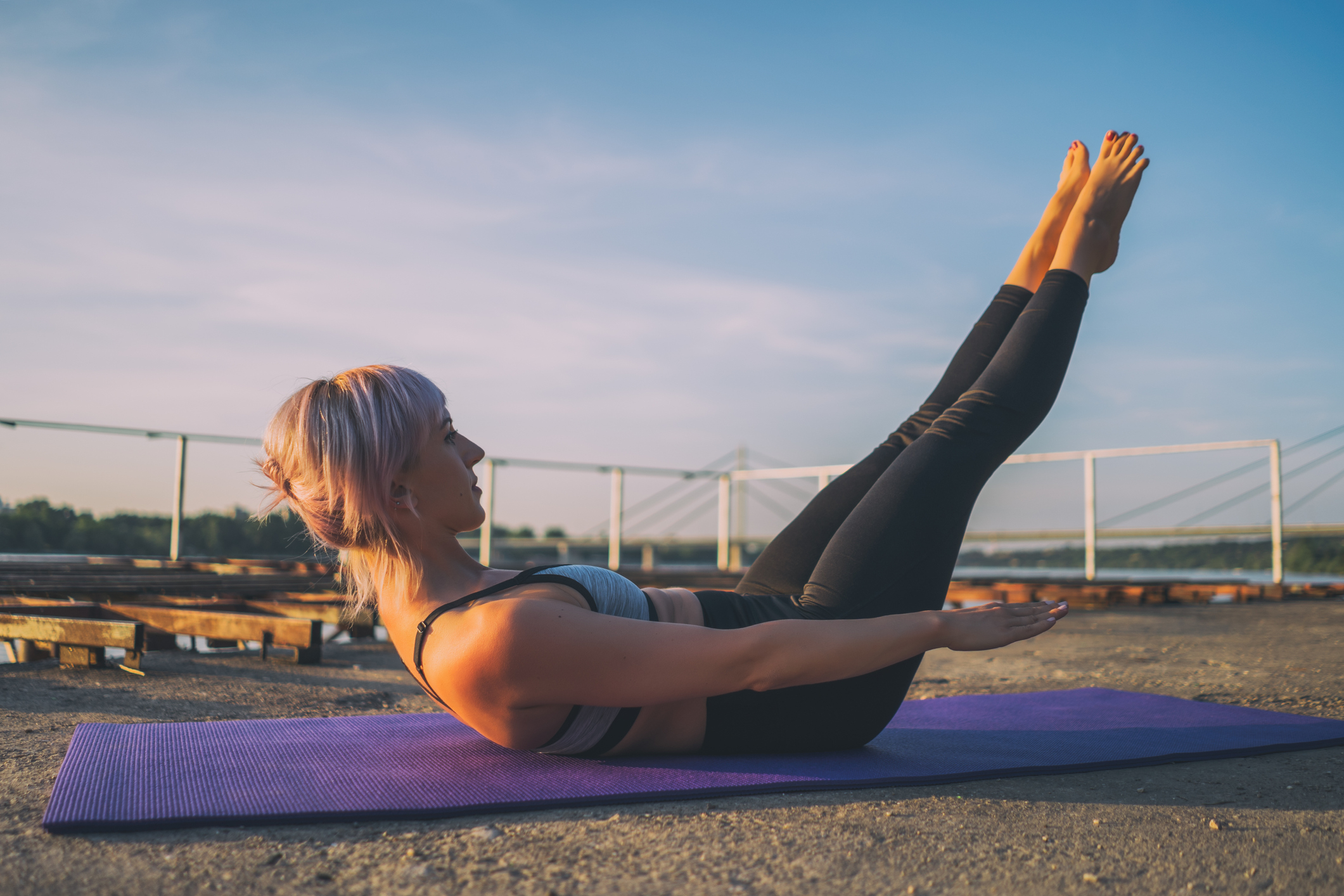
For many of us, the Pilates hundred is the most dreaded of all Pilates exercises. Holding a challenging position and pulsing my arms up and down for 100 breaths is not one of my favorite things to do. Maybe it’s because I lack the core strength to perform it properly, or maybe I’m doing it wrong.
To find out more, I asked Millie Shiers, Pilates instructor at Core LDN to explain the benefits of the Pilates hundred and why so many of us dread this exercise. "Most people lack the abdominal strength to hold themselves in flexion for the time required," says Shiers. "This means the neck muscles can take over, resulting in too much tension in the neck and shoulders."
To help, Shiers walked me through how to do the Pilates hundred correctly, as well as the variations and modifications you can try to suit your current ability. As you progress through the modifications and the exercise becomes easier it will bring a sense of accomplishment and you may even find yourself enjoying it.
What are the benefits of the Pilates hundred?
"The Pilates hundred builds on abdominal strength in two ways," says Shiers. "You’ve got to hold the weight of your legs off the floor while holding your upper body in forward flexion.
"Another benefit of the hundred is the focus on the breath. It teaches you Pilates breathing and this breathwork helps your abdominals to engage.
"Finally, the hundred builds heat in your body due to the fast pulses and that’s why it’s often used early on in a Pilates class to warm your body up."
How do you do the Pilates hundred?
- Lie on your back with your hips and knees bent at 90°, and your hands on the floor by your sides.
- Engage your abs by drawing your belly button towards your spine.
- Simultaneously lift your head, shoulders and arms and extend your legs. Your upper spine should curl off the mat so the base of your shoulder blades is just touching the mat. Your arms should be parallel with the floor. Your legs should be at 45°, although you can hold them higher if you find your lower back starts arching away from the floor.
- Hold this position for and pulse your arms, matching your breathing to the pulses. Breath in for five pulses and breath out for five pulses.
- Repeat until your have completed 100 pulses.
How do you modify the Pilates hundred?
"The hundred prep exercise teaches you how to build the skills and strength needed for the hundred," says Shiers. "In the hundred prep, keep your legs in the tabletop position and point your fingers up towards the ceiling, then practice lifting your head and chest and bringing your arms parallel to the floor, before lowering back down.
"You can also modify the hundred by keeping your legs in tabletop, therefore reducing the load on your abdominals, until you have the strength to keep the legs straight.
"Changing the angle of your straight legs during the hundred will also affect how easy or hard it feels—the closer to the floor your feet are the more challenging it will be for your abs.
"I like to teach the hundreds broken up into two sets of 50 counts until my clients can sustain the full 100 counts without any neck tension."
How do you progress the Pilates hundred?
"One progression option for the hundred is to bring your legs into the starting position from the floor, without starting in tabletop," says Shiers. "You need a lot of abdominal strength for this version!"







